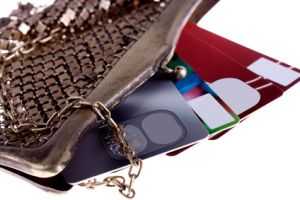
The first thing you need to realize is that you cannot be too “choosy” when searching for an unsecured credit card if you have recently undergone a bankruptcy. Credit card companies are taking a pretty big risk by loaning money to someone who just went through a bankruptcy so they will obviously charge higher APR and fees to make up for the increased risk of a default on the line of credit. This is not to say you should settle for the first offer that comes your way, but if you come across an unsecured credit card that appears to have a reasonable APR, reasonable fees, and you think you can qualify for the card you should go ahead and apply for the card. You will not be able to qualify for any premier credit cards that require exceptional credit, but credit cards for people with “poor to average” credit should be attainable, even if you have recently had a bankruptcy.
The interest rate on the credit card you will get will be high. The average interest rate on a credit card these days is around 14-15%, as someone who recently went through a bankruptcy you can expect to pay between 18-22%. If you run any type of balance at 20%+ interest will eat you alive financially. You will end up paying a ton of money in interest and you will notice that the principle you owe will hardly move each month if you make minimum monthly payments. If you recently went through a bankruptcy you should be using a credit card as a way to raise your credit score and improve your financial situation, not as a way to get back into debt over your head. You need to be aggressive each month with paying off your balance; ideally you should pay off your balance in full during the 25 day grace period most credit cards offer so you end up paying nothing in interest whatsoever! If you do run a monthly balance on your card make sure it is reasonable and no more than 30% of the maximum credit line you have, if you ever go above 30% you can expect your credit score to suffer.
If you apply for a few bad credit credit cards after bankruptcy and all you get are denials a few weeks later you should consider trying to get someone to co-sign the application with you. A co-signer basically agrees to be accountable for the debt if the person who owns the card defaults on the loan. The co-signer is in a lose-lose situation, but having a co-signer with a good credit score and credit history can be the difference between getting a credit card and not getting a credit card. Talk to your parents, significant other, or close friend who has good credit about your situation and see if they would be willing to help you out.
Here are a few credit cards you should consider if you have just undergone a bankruptcy:
1. Orchard Bank Classic Mastercard: This is my favorite credit card for people with bad credit. While not everyone is accepted who applies for this card, most are. It is a credit card geared towards people with poor credit. The card reports to all three major credit bureau’s each month automatically, you will see your credit score shoot up if you go with this card and make responsible purchases and decisions with it. The APR on the card is variable but you should never have to pay more than 20%. The annual fee depends on your credit score and financial situation but you should not have to pay more than 59 dollars a year worst case. This is a very reasonable card as far as terms go and I hear great things about it from almost everyone who is or has been a cardholder.
2. Capital One Secured Mastercard: If you are looking for a secured credit card versus an unsecured credit card this is one you should keep an eye on. APR is variable but you may have to end up paying up to 23%, which is steep, but it is worth it. The annual fee is 29 dollars, which is very reasonable for a credit card these days. This is a card meant for people with poor credit and it automatically reports to all three credit bureaus each month which will help you establish a credit history. You can get a credit line of up to 3,000 dollars which is very impressive for a card geared towards people with sub-par credit. You can use this card just like you use any other Mastercard credit card.
3. Upside Visa Prepaid card: If you are looking for a prepaid debit card, this should be one of your top choices. The monthly fee here will be no more than 3 dollars, which is nominal. You will obviously be paying nothing in interest as it is a prepaid card and there is a very good chance you will be given a card if you apply. This card is very similar to a Visa debit card, you can use this card wherever you can use a Visa Debit card. Direct deposit is free and this card allows you to write personal checks online! The monthly fee can dip down as low as 1 dollar a month.
5/10/2011